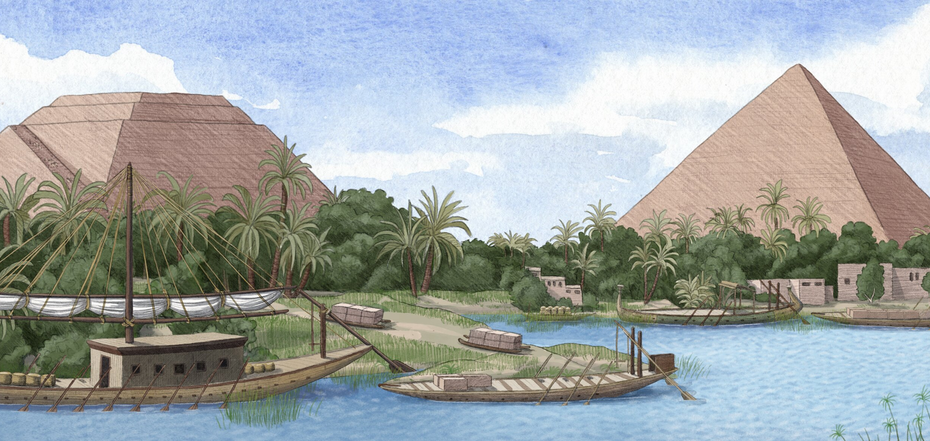Life
Scientists discover solution to one of the biggest mysteries of pyramid construction in Egypt
The mystery of the construction technology of the Egyptian pyramids has been exciting historians, archaeologists and enthusiasts for hundreds of years. It seems that scientists have managed to make a significant step towards its complete unravelling - they have found evidence that building materials were delivered to the structures that now stand in the middle of the desert by water.
According to Live Science, the plateau in Giza was covered by a now extinct arm of the Nile River about 4,500 thousand years ago, when the pyramids were built. Moreover, the water level in it was high enough to deliver goods along it.
The key to this hypothesis was provided by samples of pollen found in soil samples near the Giza pyramids. Scientists studying the history of the Nile over the past 8,000 years have suggested that in dry years, little pollen should have been deposited in these samples, and in years when the river arm was full, a lot. Thus, it turned out that during the reigns of the pharaohs Cheops (Khufu), Khafre and Menkaur (Mikerin), whose pyramids are part of the Great Pyramids complex, the water level was high. This made it possible to deliver significant volumes of construction materials to the site relatively quickly.
Scientists took five cores (cylindrical sections of soil) in the Giza floodplain in May 2019. Their analysis showed that the missing arm of the Nile was a full-fledged waterway during the reign of the Fourth Dynasty, which built the Great Pyramids of Giza. This was told by Khader Sheisha, a physical geographer at the French University of Aix-Marseille.
Sheisha noted that the water level was important for the construction of the pyramid. "It would have been very difficult, if not impossible, to build the pyramids without the Khufu branch (the name of the disappearing arm of the Nile - ed.) and without its good level, which provided enough space to accommodate boats carrying such heavy stone blocks," she said. It is not known exactly when this channel dried up, but studies indicate that 2400 years ago the water level was already very low.
The scientists' new findings correlate well with previous archaeological findings, such as the remains of a harbour near the pyramids and descriptions of limestone delivery in boats contained in ancient papyri.
As OBOZREVATEL previously reported, scientists have suggested why Egyptian pharaohs stopped building tombs in the form of giant pyramids. The reason was concerns about their safety.



























